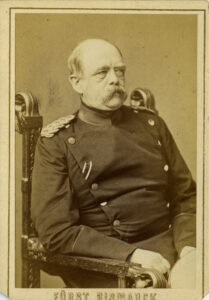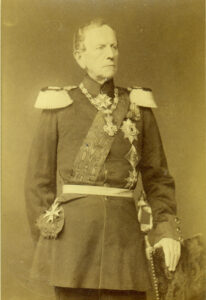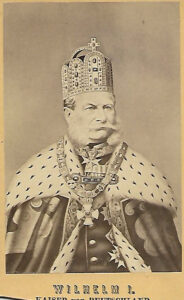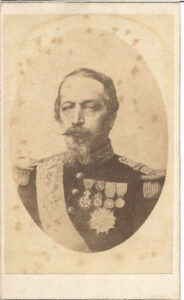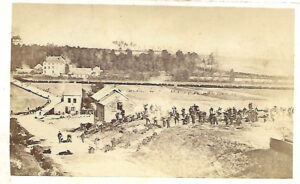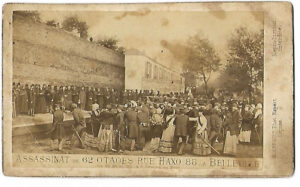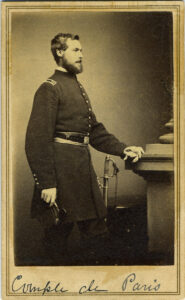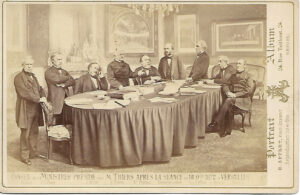Section #11 - Other Military Conflicts
The Franco-Prussian War: July 19, 1870 – January 28, 1871

The war results from Prussia’s drive to create a unified German state and France’s fear that its dominance in central Europe will be threatened by that outcome.
The German unification effort is led by Prussian King Wilhelm I and his Chancellor, the Junker Otto Von Bismarck, formerly ambassador to both Russia and France. It is partially completed in 1866 when the western duchies in the North German Confederation ally with Prussia to their east. To complete the vision, however, Bismarck intends to add the southern territories of Swabia, Bavaria, Wurttemberg, Hesse, Baden and Alsace-Lorraine.
France’s concerns about Germany increase early 1870 when the Republic of Spain offers its throne – vacant since the 1868 coup against Isabella II – to the Hohenzollern Prince Leopold of Swabia. Emperor Napoleon III now fears an alliance between Prussia and Spain, with France surrounded to the east and west. A protest is sent to Spain and it withdraws the offer to Leopold on July 9, 1870. While the crisis seems over, Wilhelm, vacationing at Bad Ems, sends a note to Bismarck on July 13 complaining of Prussia’s treatment by the French. When Bismarck publishes the “Em’s Dispatch” the flames of war spread across Prussia.
In turn, France mobilizes its troops on July 15, declares war the next day, and invades German territory on August 2. This plays right into Bismarck’s hand, since France’s aggression insures that the southern German states will come in on the side of Prussia. Thus the chance appears for the “Iron Chancellor” to achieve unification and defeat France all at once.

Led by General Helmuth von Moltke (The Elder), the combined Prussian-German forces roll over the French in short order. The key battles occur just east of the German border, with the French stronghold at Metz falling on August 6, 1870, followed by the knock-out loss at Sedan on September 1, where Napoleon III himself is taken prisoner.
The Emperor’s capture sets off a popular uprising in France led by politicians Jules Favre and Leon Gambetta and titled the Third Republic. It attempts to seek a peace treaty with Prussia, including war reparations. But the effort ends on September 6 when Germany’s demands for the cession of Alsace-Lorraine is met by a defiant vow not to “yield an inch of territory.”
The victorious Prussians then sweep west across France, surrounding Paris on September 20, 1870, and beginning a four month siege including heavy bombardments of the central city. To the north, Amiens falls in November and Orleans in the south surrenders in December.
On January 21, 1871, Paris surrenders and on January 28, Jules Favre, foreign minister of the Third Republic and Bismarck signs the Treaty of Versailles, a first attempt to end the conflict. But the treaty fails to hold when France decides to try fighting on rather than surrender Alsace-Lorraine to the enemy.
Negotiations now fall to Adolphe Thiers, former prime minister of the Second French Republic. Thiers meets with Bismarck at Versailles on November 1 where he asks for a 30-day cease fire. The Prussian refuses and tells Thiers that surrender terms will only become harsher the longer the delays. Thiers meets with Favre and recommends acceptance of the latest offer, but Favre refuses. Bismarck increases his stranglehold on Paris for three more month, destroying much of the capital and starving out the population.
Favre finally recognizes that France is out of options and sends Thiers to meet with Bismarck on January 23, 1871. The Prussian agrees to a cease fire as of midnight January 25, and on January 28, France officially capitulates. The final surrender terms include:
- War reparations set at five billion francs, payable within five years;
- Occupation of parts of France until the money is transferred;
- The cession of most of Alsace-Lorraine to Germany;
- Recognition of Wilhelm I as Emperor of all Germany;
- Return of prisoners of war; and
- Future trade regulation between the two nations.
The outcome of the war has a major impact on the future of Europe and the world. A unified Germany becomes a major power with a population equal to France and a militaristic tradition intent on expanding its global presence. Meanwhile a momentarily crippled France becomes committed to seeking revenge against Germany especially for the loss of its territory. In 1914
the two nations will square off again in World War I.
But the immediate challenge for France after its loss lies in reconstituting a government. The Second Empire ends with Napoleon III and the republican Jules Favre has lost credibility with the public. On March 18, 1871, chaos reigns in Paris when a working class revolt against the government leads to a seizure of power by a mix of socialists, feminists, anarchists and communists, the latter led by Louis Blanqui. They christen themselves the Paris Commune, immediately execute two French Generals, Claude Lecomte and Jacques Thomas, and replace the Tricolor with their Red Flag of rebellion. They murder the Catholic Archbishop George Darboy along with some 500 other opponents, and burn down the Tuilleries Palace and the city hall at Hotel de Ville. (Karl Marx regards this movement as the first example of the “dictatorship of the proletariat.”)
But their reign is short-lived and the Regular French Army conducts a “bloody week” assault between May 21-28, 1871, slaughtering 6,000 to 10,000 Communards and regaining control of the city. After which Adolphe Thiers asserts his leadership as President of the Third Republic, finally restoring social stability and an effective government.
